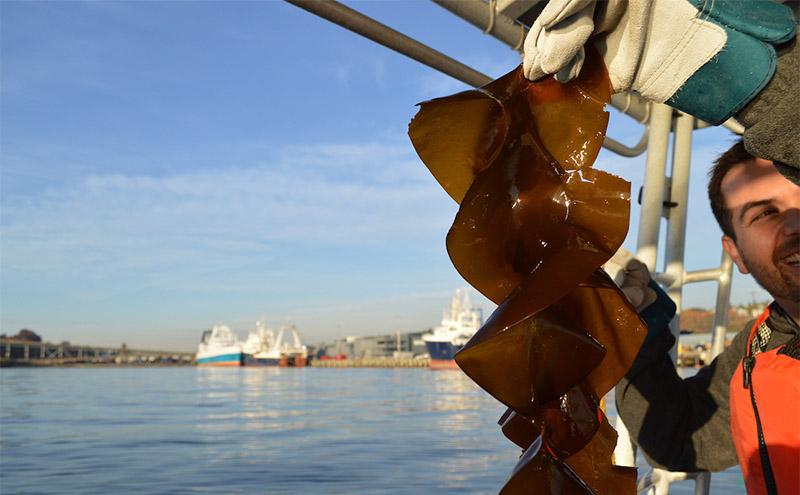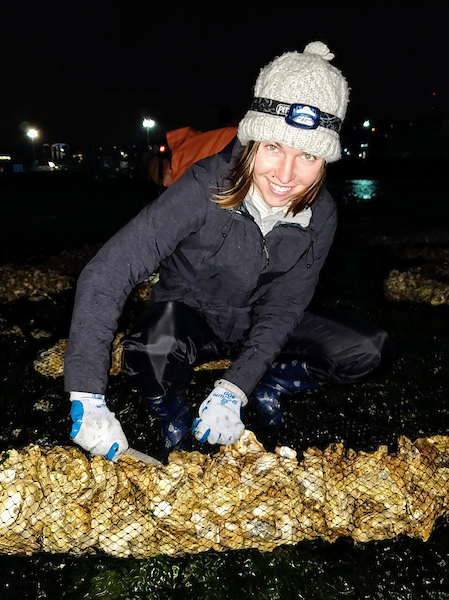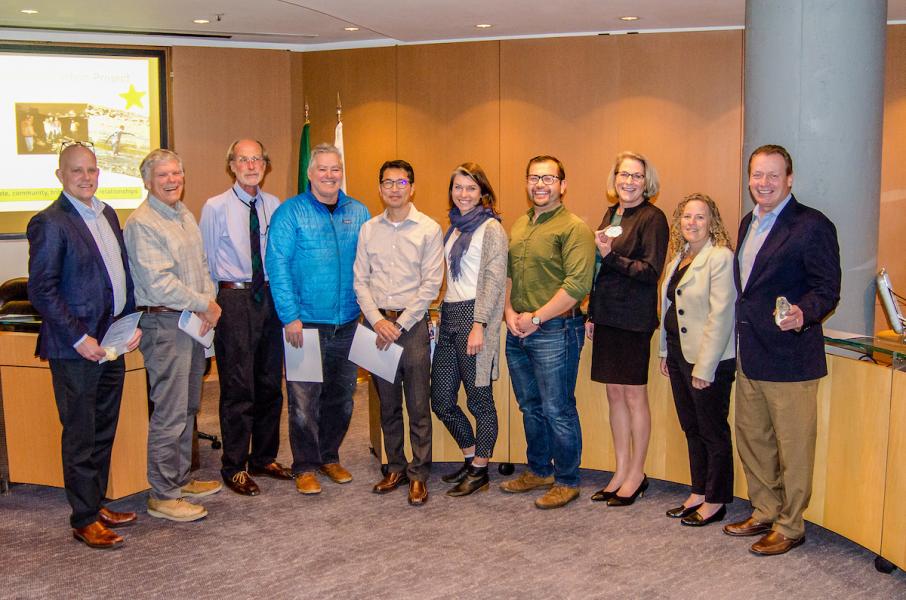
In the fight against climate change, becoming “carbon neutral” is no easy task for an international hub like the Port of Seattle, home to big ships, big jets, trains, trucks, and busy terminals. Despite the challenge, the Port strives to be a leader in moving as many goods and people as possible in the cleanest possible ways.
Becoming carbon neutral usually requires two different approaches: finding ways to put less carbon into the air, and finding ways to take carbon out of the air. Over the past few years, the Port has undertaken numerous steps to reduce its emissions, including energy efficiency measures, using cleaner energy sources, and green building techniques. Through the Smith Cove Blue Carbon Pilot Project, the Port has now also begun exploring an innovative way to trap carbon through vegetation.
Many people are familiar with the concept of photosynthesis—how plants “breathe in” carbon dioxide and “breathe out” oxygen. A healthy forest can accumulate tons of carbon per year in stems, leaves, and branches, as well as in the soil below. Carbon stored in land-based plants and soil is sometimes referred to as “green carbon,” while carbon sequestered in aquatic plants and sediment is known as “blue carbon.”
In 2017, Port graduate intern Victoria Knorr (of the University of Miami) introduced the idea of constructing a habitat restoration project to study how to use aquaculture for sequestration. Port staff worked creatively to bring the project to life, including identifying a project site, sponsor, and funding source. Ultimately, the Port’s Maritime Division selected an area at Smith Cove between the recreational marina and cruise terminal as a test site, planting test plots of kelp, eelgrass, and shellfish in the spring and summer of 2018.
In Puget Sound, kelp, eelgrass, shellfish, and salt marsh are important elements in blue carbon processes, dissolving carbon at a significant rate—as much as a ton of CO2 per acre annually. In addition, canopy-forming kelp and eelgrass beds are keystone habitats for numerous fish and wildlife species, including Chinook salmon, the primary food resource of southern resident killer whales.
 The Smith Cove project is truly a collaborative effort involving staff from the Port, Puget Sound Restoration Fund, Washington State Department of Natural Resources, the Suquamish Tribe, consultants, and the community. The effort will contribute to knowledge and expertise applicable to marine restoration in disturbed urban environments, and will confirm the ability to make important water quality and habitat improvements in Elliott Bay. The work demonstrates the Port’s regional leadership in achieving balanced economic and environmental benefits, while providing a template for others to implement similar blue carbon projects.
The Smith Cove project is truly a collaborative effort involving staff from the Port, Puget Sound Restoration Fund, Washington State Department of Natural Resources, the Suquamish Tribe, consultants, and the community. The effort will contribute to knowledge and expertise applicable to marine restoration in disturbed urban environments, and will confirm the ability to make important water quality and habitat improvements in Elliott Bay. The work demonstrates the Port’s regional leadership in achieving balanced economic and environmental benefits, while providing a template for others to implement similar blue carbon projects.
For their creative contribution, the project team earned the Port’s 4th Quarter Innovative Idea Award. Congratulations!
Recognition goes out to:
The project sponsors are Sandy Kilroy, Director, Maritime Environment & Sustainability; Elizabeth Leavitt, Sr. Director, Environment & Sustainability Center of Expertise; and Stephanie Jones Stebbins, Managing Director, Maritime Division. They are represented on the project team by Jon Sloan, Sr. Environmental Program Manager, Maritime Environment & Sustainability. The project manager is Ticson Mach, Capital Project Manager, Project Management Group, supported by Chelsey Johannsen, Engineering Services. Permitting and compliance is overseen by Paul Meyer, Sr. Manager, Environmental Permitting & Compliance, and Laura Wolfe, Sr. Environmental Management Specialist. Sediment quality and remediation issues were supported by Kathy Bahnick, Sr. Manager, Remediation Group, and Joanna Florer, Sr. Environmental Program Manager. George Blomberg, Sr. Environmental Program Manager, provides technical oversight and is the science lead for the project, as well as the primary environmental designer.


